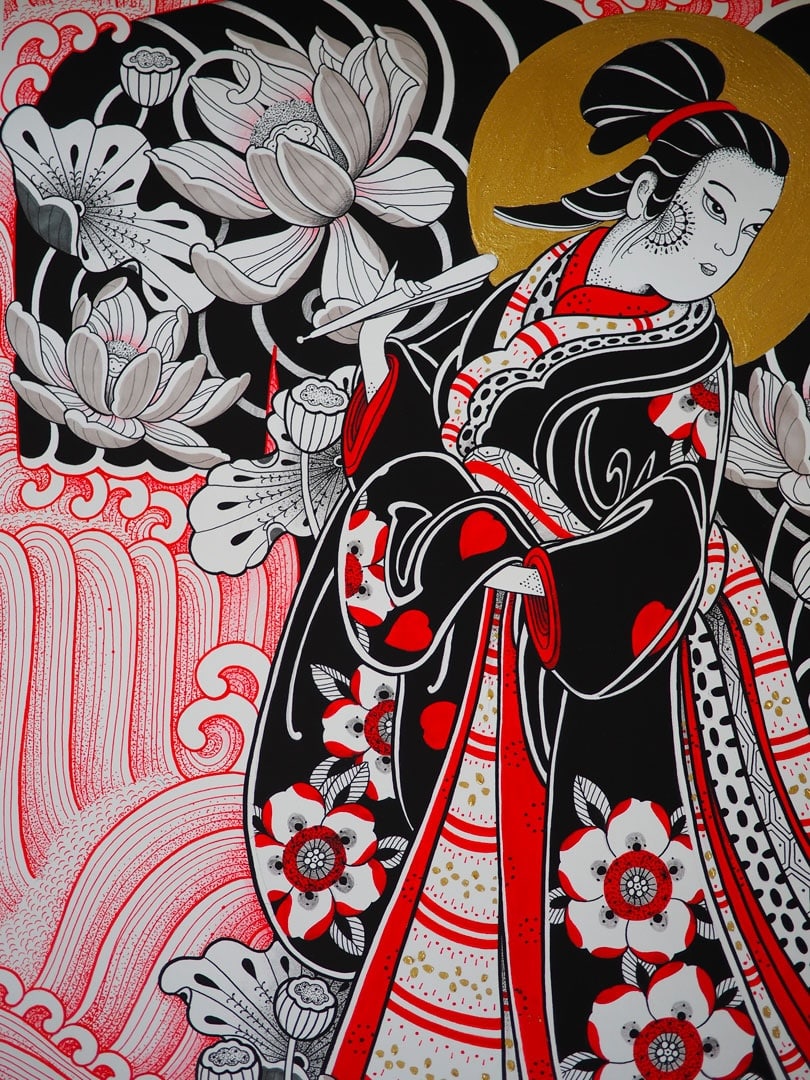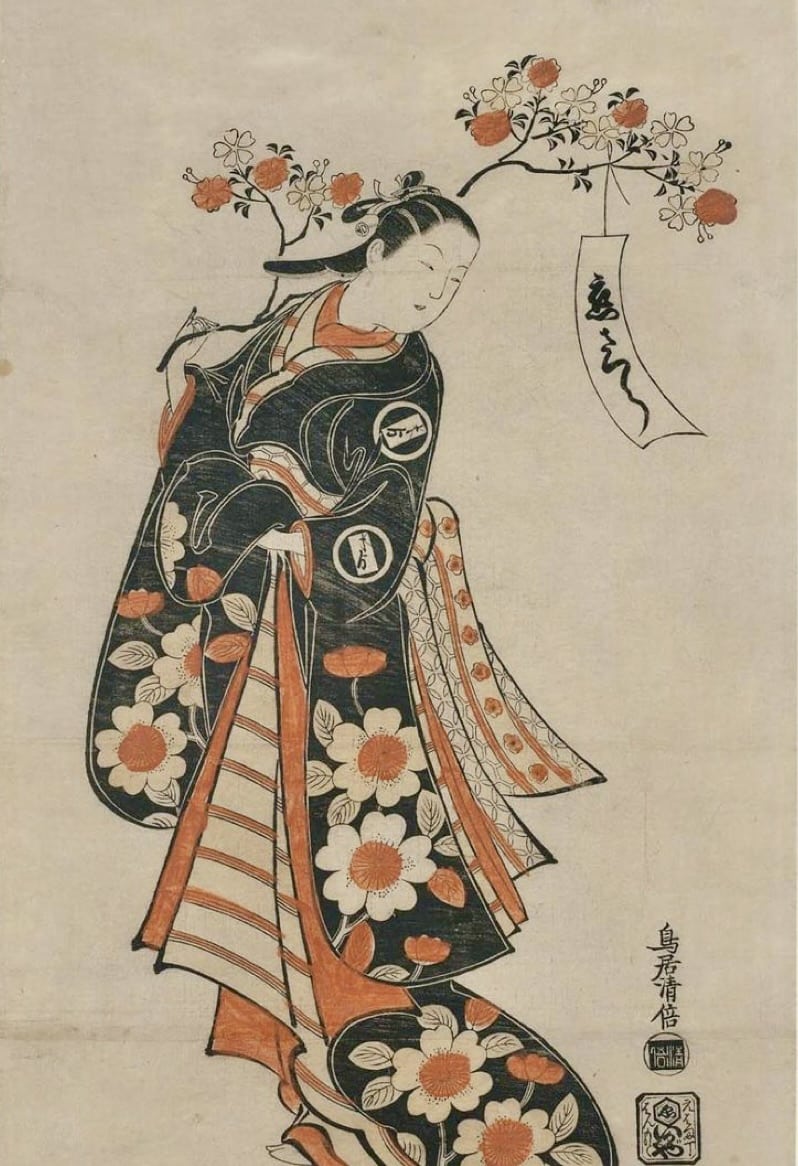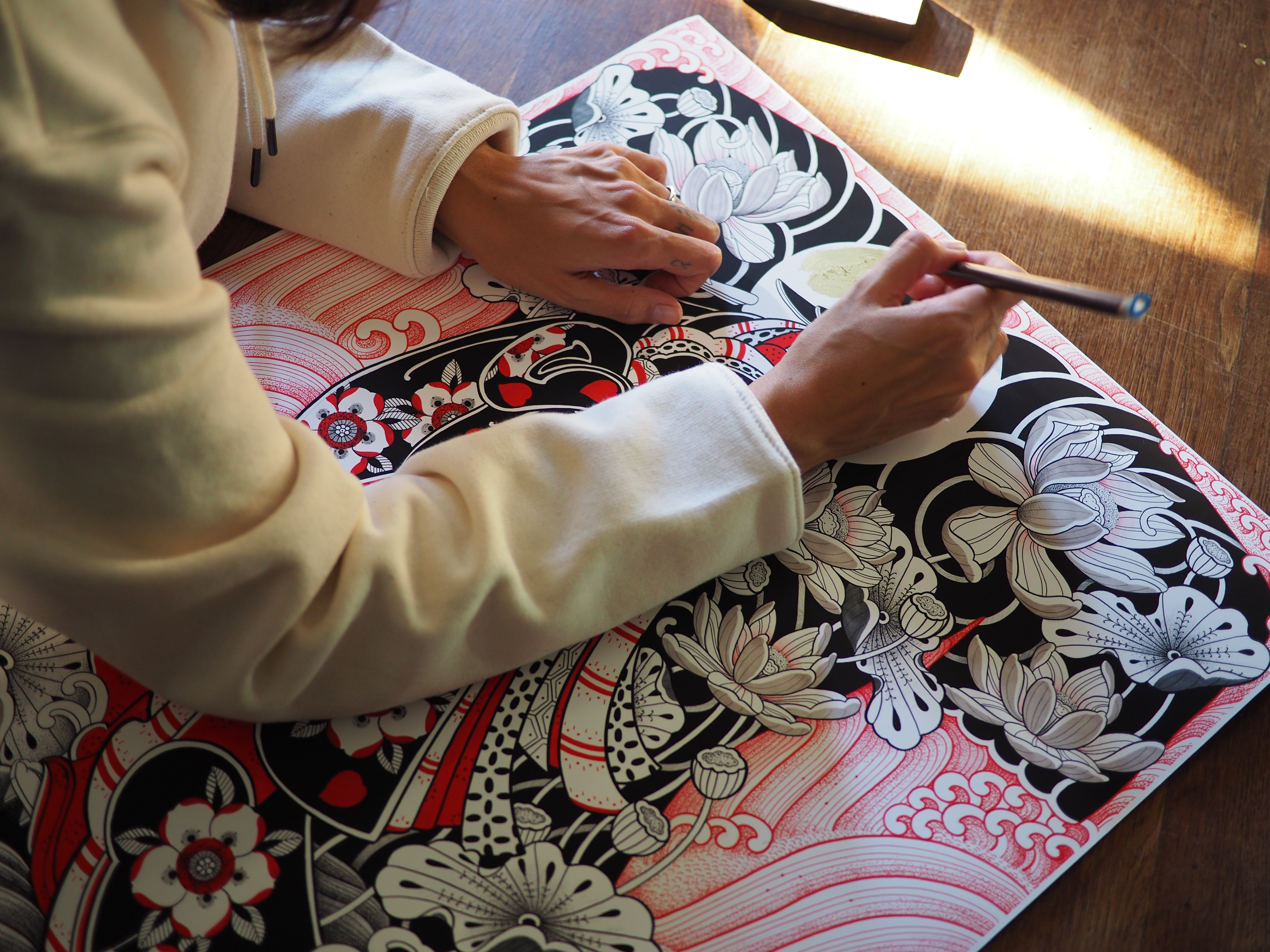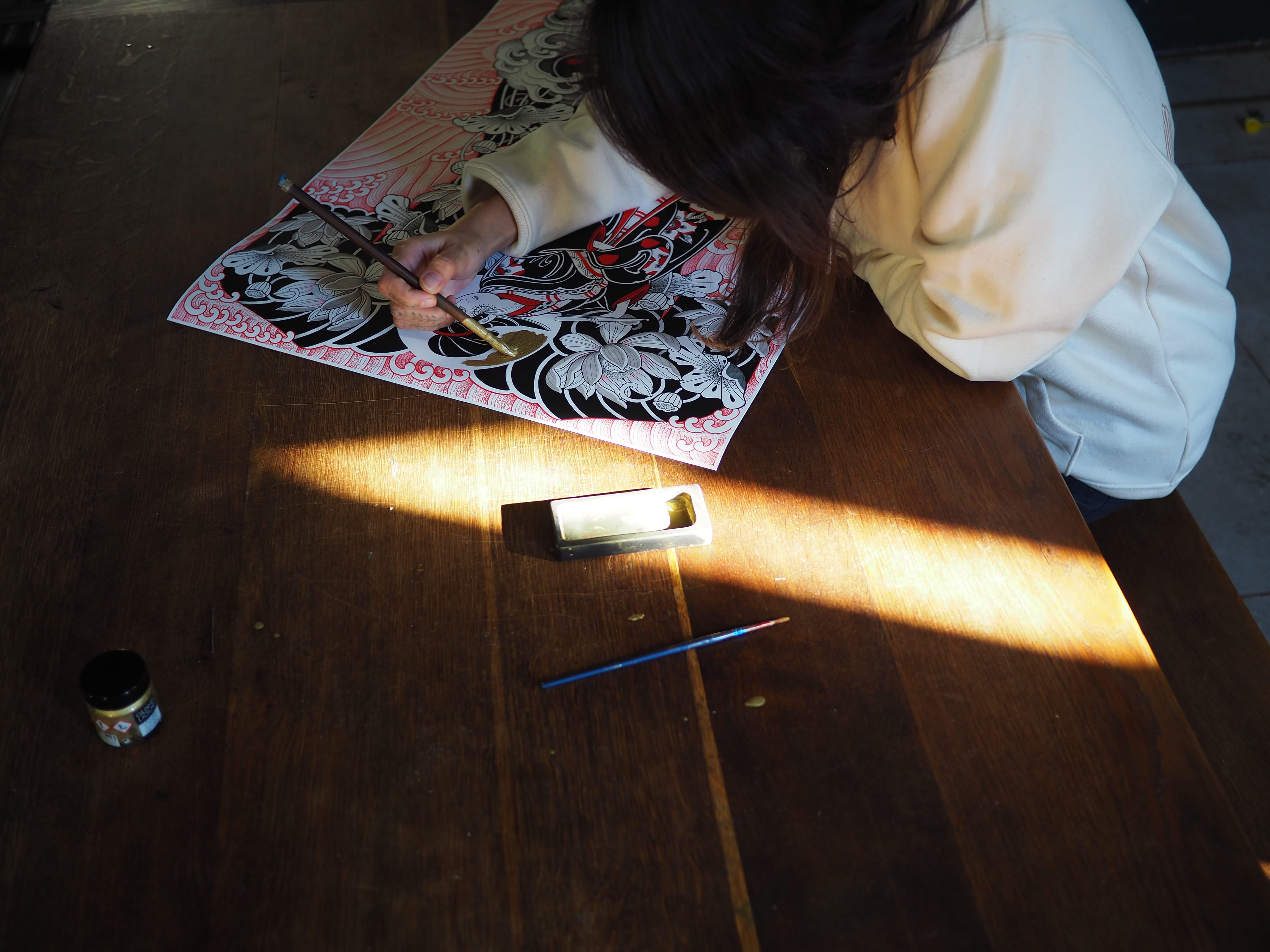Inspired by Yaoya Oshichi, a legendary figure of Japanese folklore, Caroline Karénine sensitively reinterprets the tragic fate of this romantic heroine.A young woman from the 17th century, Oshichi embodies both passionate love and the irreversible consequences of impulsive choices. Her story, immortalized in literature, Kabuki theater, and ukiyo-e prints, continues to captivate with its dramatic depth.

Yaoya Oshichi (八百屋お七): A Legendary Figure of Japanese Folklore
Yaoya Oshichi is a legendary figure in Japanese folklore, inspired by a real young woman who lived in the late 17th century. Her tragic story became famous through literature, Kabuki theater, and ukiyo-e prints.
Historical Context
Yaoya Oshichi was the daughter of a vegetable merchant (hence her name, “yaoya,” meaning “greengrocer”). She is believed to have lived in Edo (modern-day Tokyo) during the Edo period. Her legend is linked to a great fire that struck Edo in 1682, known as Tenna no Taika (the Great Fire of the Tenna Era).
The Tragic Story
According to legend:
1.After the fire, Oshichi and her family took refuge in a temple, where she met a young monk and fell deeply in love.
2.Desperate to see him again, Oshichi allegedly set fire to a district of the city, believing that another disaster would reunite them at the temple.
3.This act was considered a grave crime, and Oshichi was arrested. She was sentenced to death and executed by immolation in 1683 at the age of 16.
Cultural Influence
Yaoya Oshichi’s story has been immortalized in various artistic and theatrical works:
•Kabuki: She appears in plays such as Date Musume Koi no Higanoko (The Young Girl’s Love Rendezvous).
•Jōruri: Puppet theater dramas also depict her tragic fate.
•Ukiyo-e prints: Many ukiyo-e artists, including Torii Kiyomasu and Kitagawa Utamaro, have portrayed Oshichi in romantic or dramatic scenes.
Symbolism
Yaoya Oshichi is often seen as a symbol of passionate yet tragic love. She embodies the devastating consequences of impulsive decisions driven by intense emotions. Her youth and sorrowful fate have captivated generations of artists, making her a romantic heroine of traditional Japan.

Torii Kiyomasu (鳥居 清倍): A Master of Ukiyo-e and Kabuki Theater Art
Torii Kiyomasu (active from the 1690s to the 1720s) was a Japanese painter and printmaker of the Torii school, specializing in the ukiyo-e genre. Like other artists of the Torii lineage, his primary focus was on Kabuki theater posters, promotional materials, and yakusha-e (actor portraits), capturing the dynamic world of Edo-period stage performance.
His works are characterized by bold lines, expressive compositions, and a keen ability to convey the charisma of Kabuki actors. As a key figure in early ukiyo-e printmaking, Kiyomasu contributed to the popularization of theater-related art and influenced subsequent generations of printmakers.
Caroline meticulously reworks each print individually, applying gold leaf and refining specific details by hand.






